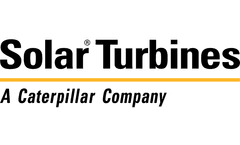Refine by
Waste Heat Recovery Articles & Analysis
41 articles found
Advanced Thermal Management and Heat Recovery Modern reactor systems are engineered with multi-zone temperature control, allowing operators to fine-tune the thermal environment at different stages of the process. This zoned heating ensures that volatile components are efficiently cracked without over-carbonizing the residue. Integration with ...
This method also prolongs the lifespan of internal components and refractory lining. Enhanced Insulation and Heat Recovery Advanced pyrolysis systems now incorporate high-temperature ceramic fiber insulation and layered refractory materials to reduce heat dissipation. Thermal losses through reactor walls are significantly curtailed, improving ...
These equipments use advanced pyrolysis technology to pyrolyze various biomass raw materials, such as wood waste, agricultural straw, fruit shells, etc., in an oxygen-free or low-oxygen environment, and convert them into high-quality biomass charcoal, biomass gas and biomass oil. ...
The Town of Caledon, self-proclaimed “Greenest Town in Ontario,” demonstrates its commitment to sustainability through successful energy management initiatives that have reduced consumption and costs while preserving its heritage and fostering community progress ...
Additionally, the popularity of charcoal for domestic use, especially in grilling and heating, remains strong. Target Markets Identifying target markets is essential for optimizing sales and profitability. ...
The spinning industry in Bangladesh is witnessing gigantic investment as local entrepreneurs are either developing their production capacities or setting up new units as the demand for garment raw materials is increasing. Reports state that In Bangladesh, there are almost 500 spinning mills. Huge domestic and foreign demand makes it one of the main branches of the Bangladesh economy. The tough ...
Pyrolysis, the thermochemical decomposition of organic materials in the absence of oxygen, has emerged as a potentially lucrative technology for waste management and resource recovery. However, embarking on a pyrolysis venture necessitates a thorough understanding of the economic viability of the process. ...
Across all industries, energy-saving issues are taking center stage as there is a focus on reducing energy consumption to mitigate the impact the industrial sector has on energy consumption and subsequent emission of harmful greenhouse gases including carbon dioxide (CO2). Combined heat and power (CHP) system offers a way to reduce energy waste in the industry helping reduce costs and overall ...
Heat loads coming from an industrial site at different flow rates and temperatures have to be transferred to a heating grid. Since there is much more heat available than demand for district heating, the excess heat originally would have to be cooled down. The hot water return temperature to the industrial site has to remain the same at all ...
Applications of Pyrolysis Equipment Pyrolysis equipment finds applications across various industries, offering solutions for waste management, resource recovery, and energy production. One prominent application is the recycling of waste tires and plastics. ...
Organic Rankine Cycle working principle The Organic Rankine Cycle has characteristics that make it ideal for heat recovery and the exploitation of low-temperature heat sources in general. ...
However, thanks to recent advancements in ORC technology, heat sources as low as 70°C can now benefit from waste heat recovery. ...
ORC systems incorporating a twin-screw expander are not only more affordable and reliable but are more suited for low temperature waste heat recovery where heat availability is variable and are particularly well suited for net-zero cooling applications. ...
After careful consideration, a 5.7 MWe Taurus11 60 was chosen as the primary power generation equipment. Coupled with a waste heat recovery boiler, the gas turbine generator set would provide the campus with both the power and steam it needed. ...
Because their processes require heavy energy use and steam for process heat, the company operates many combined heat and power (CHP) plants at their manufacturing facilities around the globe. ...
Due to the increasing trend of rising fuel prices in recent decades and the ever-growing concern about global warming, companies are facing pressure to reduce greenhouse gas emissions and improve the energy efficiency of their installations. Therefore, the use of waste heat recovery systems in the industrial waste ...
That’s fine, what they have in common is a device called a heat exchanger. Now believe it or not, you are probably quite familiar with one heat exchanger, but know it under a different name; it’s the radiator in your car. Heat exchangers are critical for keeping various devices cool so that they don’t overheat and malfunction. ...
When a UK-based textiles manufacturing plant were looking to increase the energy efficiency of its twin yarn drying process lines ThermTech designed, manufactured and installed a waste heat recovery system which met their needs. The two dryers originally exhausted both hot and humid air to atmosphere at around 140°C. A simple, ...
The spent carbon is regenerated on-site in a gas fired rotary hearth furnace and the hot exhaust gases (700°C) from the furnace are a valuable high grade source of waste heat. Waste heat recovery system installed for a UK based edible oils processing plant Due to the contaminants contained within the ...
Recommendations for retrofitting and upgrade of all air conditioning systems for both Lahaina Grill and Lahaina Inn. A Waste Heat Recovery System which gathers the heat off of the air- conditioning system and sends it to a heat exchanger which creates approximately 7-8 gallons of extremely hot water per ton per ...

















